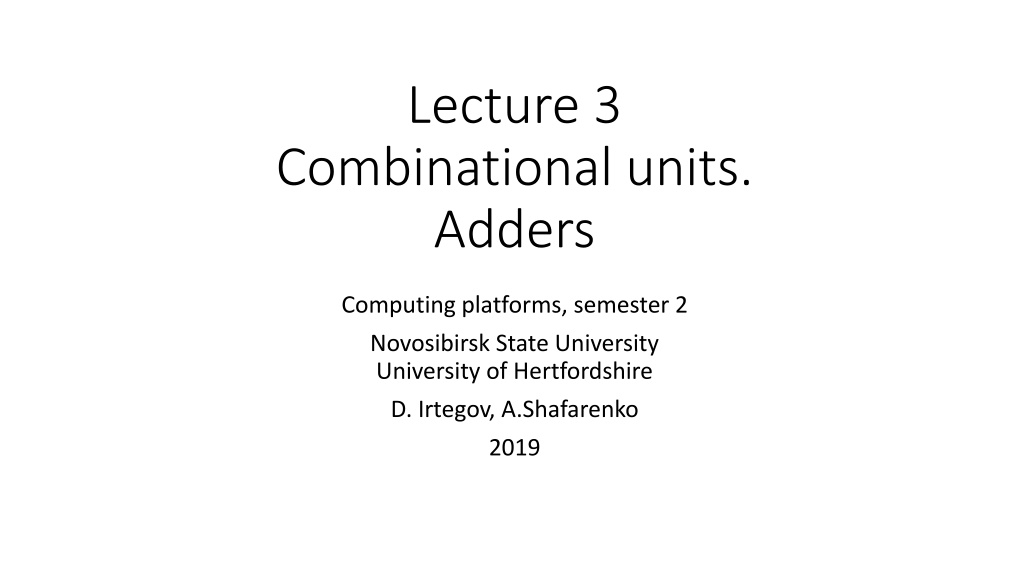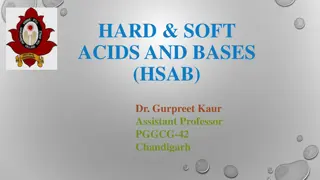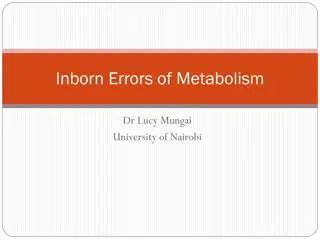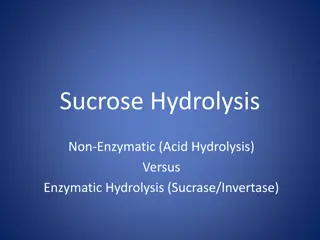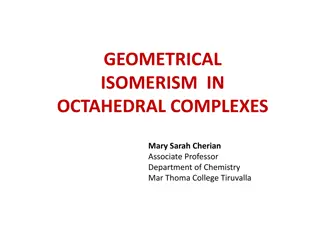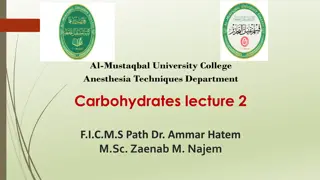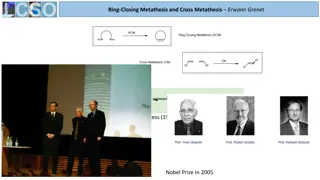Carbohydrate-Based Ligands for Immunostimulation
Carbohydrate-based ligands with immunostimulatory properties isolated from Bacteroides fragilis for enhancing innate and adaptive immune responses in mammals. The synthesis and evaluation of saccharide analogs as potential stimulants of immunity are discussed, along with synthetic studies on subunits A, B, and C
Download Presentation

Please find below an Image/Link to download the presentation.
The content on the website is provided AS IS for your information and personal use only. It may not be sold, licensed, or shared on other websites without obtaining consent from the author.If you encounter any issues during the download, it is possible that the publisher has removed the file from their server.
You are allowed to download the files provided on this website for personal or commercial use, subject to the condition that they are used lawfully. All files are the property of their respective owners.
The content on the website is provided AS IS for your information and personal use only. It may not be sold, licensed, or shared on other websites without obtaining consent from the author.
E N D
Presentation Transcript
Lecture 3 Combinational units. Adders Computing platforms, semester 2 Novosibirsk State University University of Hertfordshire D. Irtegov, A.Shafarenko 2019
Some terminology Combinational units: pure logical functions. Output depends only on input No side effect (except delay) Can be described by single logical expression Sequential units: have internal state Output depends not only on the inputs Input can have side-effect (changing internal state) Require logical elements we did not study yet.
Popular combinatory units Decoder k inputs, 2k outputs. Interprets inputs as k-bit number n, sets n-th output to 1, all others to 0 Standard decoders usually have Enable input. When Enable is down, all outputs are down Multiplexer 2k m-bit inputs and one k-bit selector input Connects n-th input to the output
So, the adder Two bit half adder Adds two bits and produces result and carry bit S=A B, Cout=A^B
The full adder Has three inputs: A, B, Cin Also has two outputs: R and Cout Can be constructed from two half adders
Three-bit adder Place three full adders in a row Connect Cout0 to Cin1, etc Sounds simple and good enough for Logisim For real devices, carry must propagate from bit 0 to N This design is known as ripple carry adder Delay ~= O(N) We discuss this later
How to deal with carry propagation delay? A sequential adder. Carry propagation time for N-bit adder ~=N(delay of single adder) Why bother building N adders if they cannot actually work in parallel?
Carry-save adder Result is provided as two bits (carry not propagated) 10111010101011011111000000001101 + 11011110101011011011111011101111 = 21122120202022022122111011102212 To produce binary number, we still need to propagate carry But we can add these saved-carry numbers without converting to binary And propagate only on last stage Carry-save adders are used in multiplicators, in cryptography, etc
Carry-lookahead Instead of Cout, every adder provides two signals, P (propagate) and G (generate) P(A,B)=AvB G(A,B)=A^B Ci+1=Giv(Pi^Ci) Actually, a recursive formula C4=G3v(P3^G2)v(G1^P2^P3)v (G0^P1^P2^P3)v(C0^P0^P1^P2^P3) Gate count O(N2), but delay close to constant
4-bit carry lookahead in Logisim Delay depends on number of gates the signal passes between input and output NOT on total number of gates In this design, C3 produced from 7 input signals, but each of these signals pass only two gates So, we can improve speed by increasing number of gates In computing, simpler is not always better
Ways to produce multibit adder Often, a combination of ripple carry and carry lookahead is used 16-bit adder can be implemented from 4-bit units as: ripple-carry connected via carry-lookahead carry lookaheads connected via ripple carry carry lookaheads connected via second level carry lookahead Other tricks, like carry-skip (aka carry bypass) adder Read the Wikipedia
